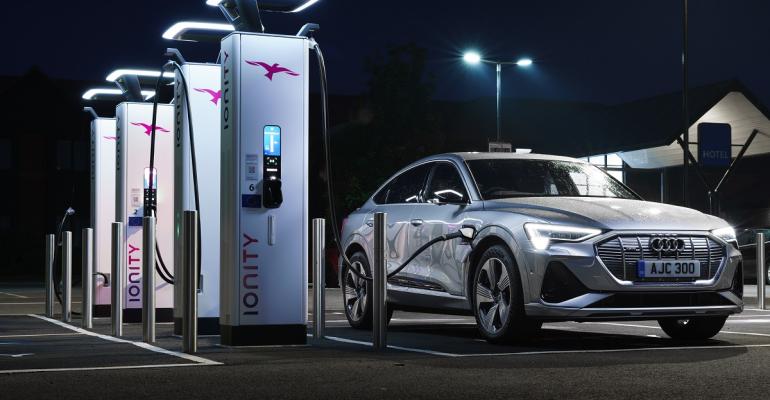Europe and China are surpassing the U.S. when it comes to the uptake of battery-electric vehicles.
That’s the latest finding of vehicle data analyst Jato Dynamics, whose report, In the slow lane: EV demand in the U.S., places the blame on relatively low gas prices and large vehicles in the world’s second-largest light-vehicle market.
It finds that while global sales of BEVs increased rapidly between 2019 and 2023, from 1.6% to 11.2% of volume, most of that rise was thanks to sales in China accounting for more than half of that figure and Europe in second with 22% of global demand, with just 12% in the U.S.
Cheap fossil fuel and a preference for large vehicles are seen as the major contributors of the U.S. consumer’s dependence on the culture of internal-combustion powertrains.
According to Jato’s data, SUVs accounted for 56% of total light-vehicle sales in the U.S. last year, while pickup trucks accounted for 18%. Large and luxury SUVs accounted for one-fourth of these sales, with 3.13 million units. By comparison, 10.3 million SUVs were sold in 2023 in China, a much bigger market, of which just 1.33 million were large and luxury models. In Europe, this figure drops significantly to just 352,000 units, accounting for only 5% of the segment’s total.
Taking into account the comparatively higher BEV retail prices and the comparatively low cost of running an ICE vehicle in the U.S., there is currently no strong financial incentive to encourage consumers to make the switch to electric. A lack of charging infrastructure is also seen as a big barrier for car buyers to make the switch away from ICE vehicles which boast a longstanding comprehensive network of service stations.
While the number of publicly accessible charging points increased by about 55% globally between 2021 and 2022, deployment has again been led by China and Europe. In 2022, China accounted for almost 90% of global growth of fast chargers, bringing the total stock in the country to 760,000. Europe saw a 55% increase compared with the previous year, bringing the total to more than 70,000.
By comparison, 6,300 fast chargers were installed the U.S. in 2022, bringing the total stock to just 28,000. Michael Kasuba, global head of analytics at Jato Dynamics, says: “Currently, many EV models available in the U.S. are priced from $40,000 upwards. With overall vehicle prices trending higher in recent years, the lack of affordable options may also be impacting younger buyers who might be more inclined to purchase an EV.”





